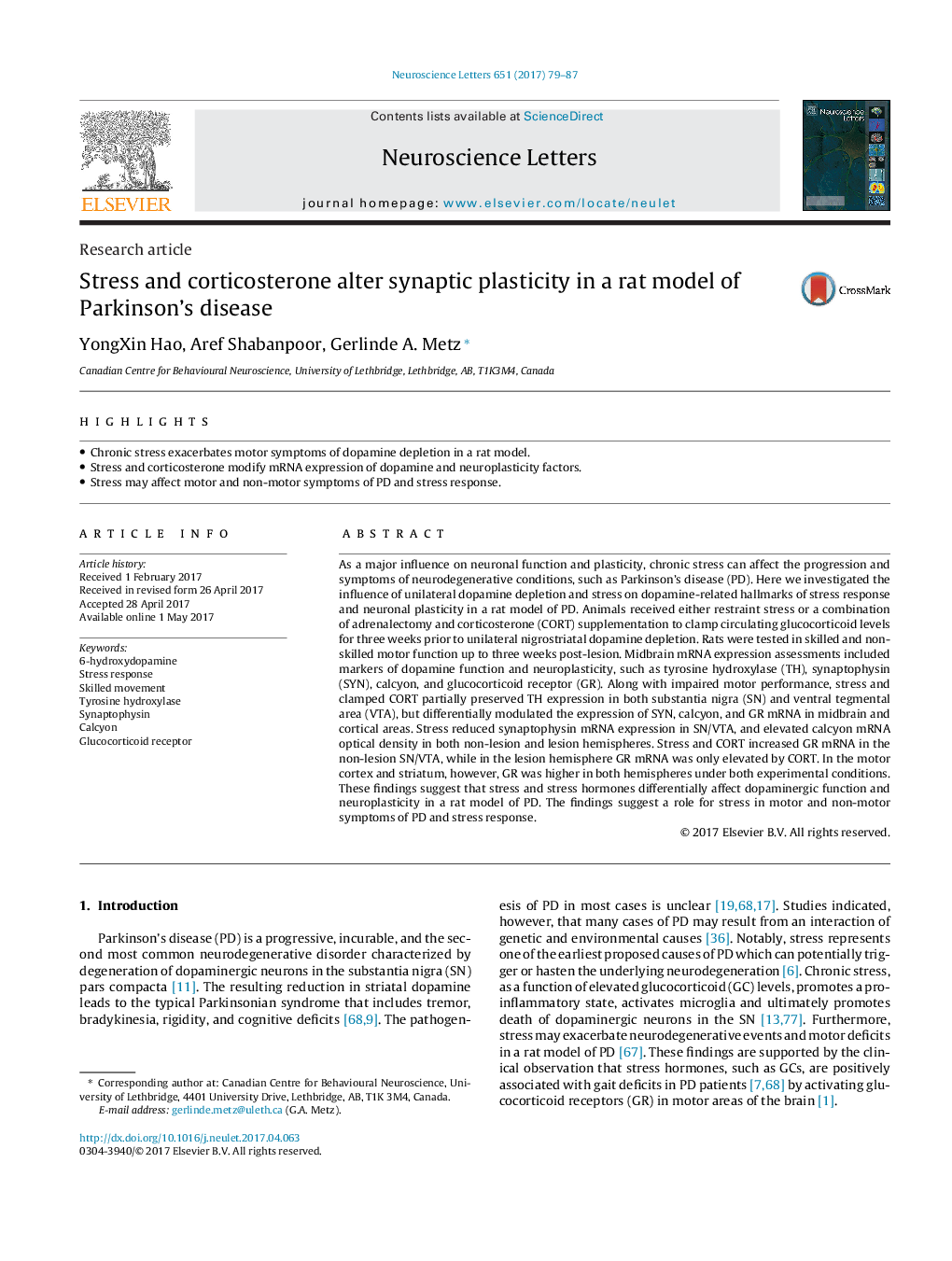| Article ID | Journal | Published Year | Pages | File Type |
|---|---|---|---|---|
| 5738202 | Neuroscience Letters | 2017 | 9 Pages |
Abstract
As a major influence on neuronal function and plasticity, chronic stress can affect the progression and symptoms of neurodegenerative conditions, such as Parkinson's disease (PD). Here we investigated the influence of unilateral dopamine depletion and stress on dopamine-related hallmarks of stress response and neuronal plasticity in a rat model of PD. Animals received either restraint stress or a combination of adrenalectomy and corticosterone (CORT) supplementation to clamp circulating glucocorticoid levels for three weeks prior to unilateral nigrostriatal dopamine depletion. Rats were tested in skilled and non-skilled motor function up to three weeks post-lesion. Midbrain mRNA expression assessments included markers of dopamine function and neuroplasticity, such as tyrosine hydroxylase (TH), synaptophysin (SYN), calcyon, and glucocorticoid receptor (GR). Along with impaired motor performance, stress and clamped CORT partially preserved TH expression in both substantia nigra (SN) and ventral tegmental area (VTA), but differentially modulated the expression of SYN, calcyon, and GR mRNA in midbrain and cortical areas. Stress reduced synaptophysin mRNA expression in SN/VTA, and elevated calcyon mRNA optical density in both non-lesion and lesion hemispheres. Stress and CORT increased GR mRNA in the non-lesion SN/VTA, while in the lesion hemisphere GR mRNA was only elevated by CORT. In the motor cortex and striatum, however, GR was higher in both hemispheres under both experimental conditions. These findings suggest that stress and stress hormones differentially affect dopaminergic function and neuroplasticity in a rat model of PD. The findings suggest a role for stress in motor and non-motor symptoms of PD and stress response.
Keywords
Related Topics
Life Sciences
Neuroscience
Neuroscience (General)
Authors
YongXin Hao, Aref Shabanpoor, Gerlinde A. Metz,
